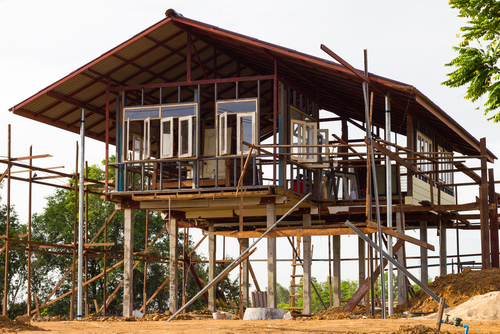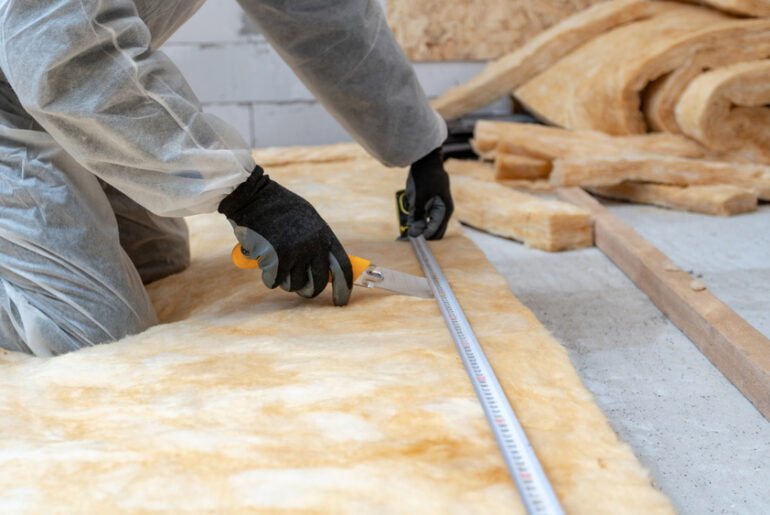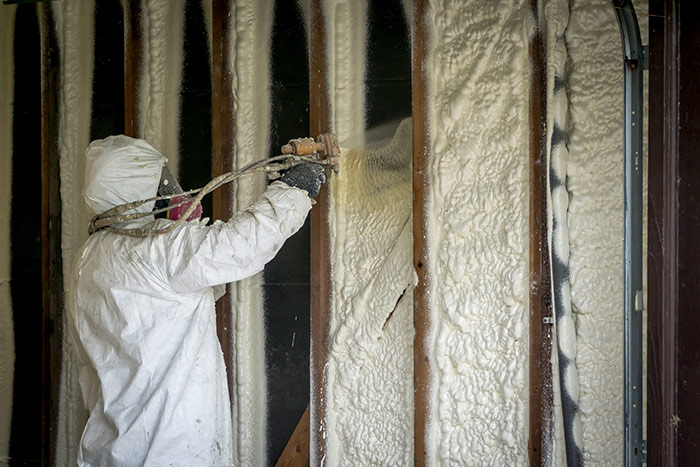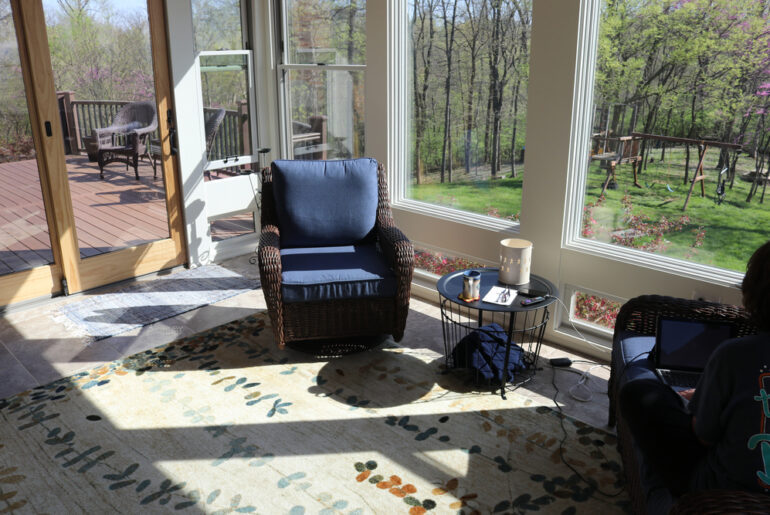When insulating the floor of a raised house, you have some additional considerations. For one, there’s a piling foundation, likely with a crawl space underneath, so you’ll want to make sure that your insulation is properly sealed and airtight.
You also have the option of insulating the floor from the outside, which can be more effective. There are a few different ways to insulate the floor of a raised house, such as spray foam, rigid foam board, or fiberglass batts.
Here’s a guide on the step-by-step application of each method, along with the costs. Keep reading to learn more.
Should You Insulate the Floor of a Raise House?
Ideally, you should insulate the floor of a raised house for two main reasons. The first is to improve comfort levels inside the home. Keeping the heat in during winter and the cool air in during summer can create a more consistent temperature inside.
It can be especially beneficial if you have any rooms that are difficult to heat or cool, such as an attic or bonus room.
The second reason to insulate the floor of a raised house is for energy efficiency. The more heat you can keep inside the home, the less your furnace or air conditioner will have to work.
As a result, it leads to lower energy bills. Insulating the floors can also prevent the entry of moisture, pests, and other outdoor elements.
You might not need to insulate the floor of a raised house if you live in an area with a mild climate. For example, if you live in the southern United States, you might not get as much use out of insulation since temperatures don’t fluctuate as much.
Another factor to consider is the type of flooring you have. If you have hardwood floors, they won’t retain as much heat as carpeted floors. So, you might not see as much of a difference in comfort levels by insulating the floors.
Insulate The Floor of a Raised House Step By- Step
There are two main ways to insulate the floor of a raised house, spray foam and fiberglass batts. Both options work well, but you might choose one over the other based on your preferences and budget.
Option 1: Spray Foam
Spray foam is a type of insulation sprayed onto the floor and expands to fill any cracks or gaps. It’s a great option for insulating the floor of a raised house and it provides a tight seal that prevents air and moisture from passing through.
However, spray foam can be tricky to install for an inexperienced homeowner.
Cost: On average, it can take anywhere from $1,200 to $3,700 to spray foam the floor of a raised house. The price will vary depending on the size of your home and the spray foam you use.
Pros of Spray Foam
Some notable benefits of spray foam include the following:
- Moisture-Deterrent: Since spray foam is applied as a liquid, it can seal any cracks or crevices and fill them in. That makes it an excellent option for preventing moisture from seeping into the home.
- Long-Lasting: Once spray foam dries, it’s there for good. That means you won’t have to reapply it like you would with other types of insulation.
- Sound Reduction: If you live in a raised house with thin walls, spray foam can help muffle any noise from outside or other rooms.
- Rodent-Deterrent: Spray foam has zero nutritional value, so rodents and other pests won’t be interested in it. That helps keep them out of your home.
Things to Remember
Here are a few things to know about spray foam:
- Types: Spray foam may be open-cell or closed-cell. The difference is that closed-cell is denser, stronger, and more resistant to moisture and air. That makes it the better choice for insulating a raised floor.
- Drying Time: Most types of spray foam take about 24 hours to dry. During that time, you’ll want to keep kids and pets away from the area, so they don’t accidentally touch it.
- Smell: When spray foam is applied, it emits fumes that can be harmful if inhaled. That’s why it’s crucial to have proper ventilation when using this type of insulation.
Step-by-Step Application Process
Now that you know more about spray foam, here’s a step-by-step guide to insulating a raised house with spray foam.
1. Mix the Foam
The first step is to mix the spray foam according to the manufacturer’s instructions. You will find two containers, one with a liquid and one with a powder. Pour the liquid into the container with the powder and stir until it’s fully mixed.
2. Prepare the Spray Foam Gun
The simplest way to apply spray foam is with a spray foam gun. You can find these at most hardware stores. To prepare the gun, connect it to an air compressor and then to the container of mixed foam.
3. Test the Sprayer
Before you start spraying, it’s important to test the gun. Aim it into a trash can and squeeze the trigger to get a feel for how much foam comes out. Once you’re comfortable with the amount, you’re ready to spray.
4. Apply the Foam
Now, it’s time to start applying the foam. Begin by spraying the perimeter of the room and working your way in.
Keep the gun about 12 inches away from the floor and move it in a steady back-and-forth motion. As you spray, the foam will expand, so be sure to stop periodically to check your progress.
5. Let the Foam Dry
Once you’ve finished spraying, let the foam dry for at least 24 hours.
Option 2: Fiberglass Batts
Another option for insulating the floor of a raised house is fiberglass batts. These are pre-cut pieces of insulation that fit between the floor joists. They’re quick and easy to install and provide a decent amount of insulation.
Cost: The average cost of fiberglass insulation is $0.88 to $1.64 per square foot. So, if your floors are 1,000 square feet, you can expect to pay between $880 and $1,640.
Pros of Fiberglass Batts
Here are the advantages of using fiberglass insulation:
- Budget-Friendly: Fiberglass batts are cheaper than most other types of insulation, so they’re a good option if you’re on a budget.
- Easy to Install: You don’t need special equipment to install fiberglass batts. All you need is a measuring tape, a utility knife, and someone to help you hold the batts down.
- Mold-Resistant: Since fiberglass is made of glass, it’s naturally resistant to mold and mildew.
- Eco-Friendly: Unlike some other types of insulation, fiberglass is made from recycled materials.
Things to Remember
Here are a few things you should know before you use fiberglass insulation:
- Pre-Fabrication: It’s easy to find pre-cut batts that are the right size for your floor. However, you can also have them cut to size at most hardware stores.
- Itchiness: One downside of fiberglass is that it’s itchy. Wear long sleeves and gloves when you’re handling it.
- Dangerous for breathing in. Wear a protective mask when working to avoid breathing in fiberglass.
Step-by-Step Application Process
Here’s how to install fiberglass insulation on the floors of a raised house.
1. Cut the Batts
First, you’ll need to cut the batts to size. If you’re using pre-cut batts, you can skip this step. Otherwise, measure the distance between the floor joists and cut the batts to fit.
2. Install the Batts
Next, install the batts between the floor joists. Start at one end of the floor and work your way to the other.
If you’re working alone, you can hold the batt in place with one hand and staple it down with the other. If you have someone helping you, they can hold the batt while you staple it.
3. Repeat
Repeat steps 1 and 2 until all of the floor joists are insulated.
Tips for Insulation the Floor of a Raised House
- If you’re on a low budget, opt for fiberglass insulation rather than spray foam.
- Don’t forget to insulate the floors of any porches or decks that are attached to your raised house.
- Hire a professional if you’re not comfortable doing the work yourself.





